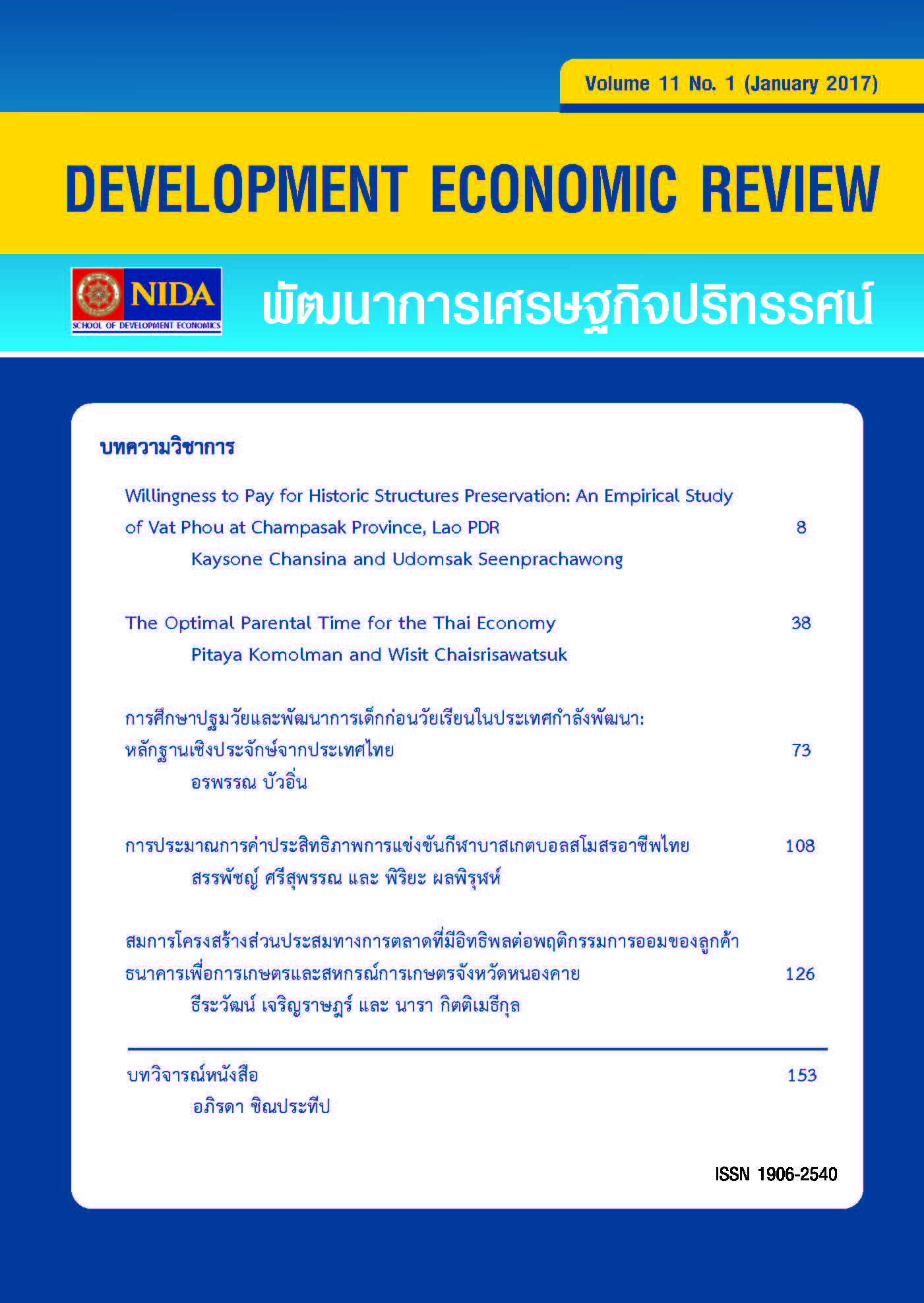Structural Equation Modeling of the Marketing Mix Influencing Savings Behavior of Customers of Bank for Agriculture and Agricultural Co-operatives in Nong Khai Province
Keywords:
Structural Equation Modeling (SEM), Marketing Mix, Savings Behavior, Bank for Agriculture and Agricultural Cooperatives (BAAC)Abstract
The purpose of this study is to examine the marketing mix factors that can affect the savings
behavior of customers of Bank for Agriculture and Agricultural Co-operatives (BAAC), Nong
Khai Branch, Nong Khai Province, Thailand. This study collected a convenience sample of 352
customers of BAAC who has a fixed deposit account. A structural equation modeling (SEM) is
utilized to analyze data, using partial least squares (PLS) regression. Summary of the results
are: 1) results from the savings behavior revealed that most of samples have a net profit and
salary less than THB 15,000 per month. They have a fixed deposit account entitled, savings
Taweechok, with the average deposit account 1 account per person. They have the average
deposit 12 times per year or 1 time per month, with the average deposit amount of 2,000 baht
per time; 2) Results from the attitude on the marketing mix factors (7Ps) that could affect savings
behavior of customers of BAAC showed that personal, evidence and presentation, process, and
product were at the most level, while promotion, place and price were at high level. However,
the overall results of the marketing mix was at a high level; 3) The results from SEM revealed
that there are 4 latent variables of the marketing mix that found to be statistically significantly
associated withsavings behavior of customers, price, promotion, process and personal. The
findings from this research can be used to improve deposit products of BAAC. It can also be
increased incentives for customers of BAAC to save money and to promote savings and improve
services in relation to saving behavior of customers of BAAC, Nong Khai branch, Nong Khai
province, Thailand.
Downloads
Published
Issue
Section
License
Copyright to published manuscripts becomes the property of the Graduate School of Development Economics, National Institute of Development Administration. Reproduction of all or part of a Development Economic Review (DER) article by anyone, excluding author(s), is prohibited, unless receiving our permission.
Disclaimer: Opinions expressed in articles published in this journal are those of the author (s) and do nto necessarily represent opinions of the Graduate School of Development Economics, National Institute of Development Administration. Trade and proprietary names are only for identification and not constitute our endorsement.


